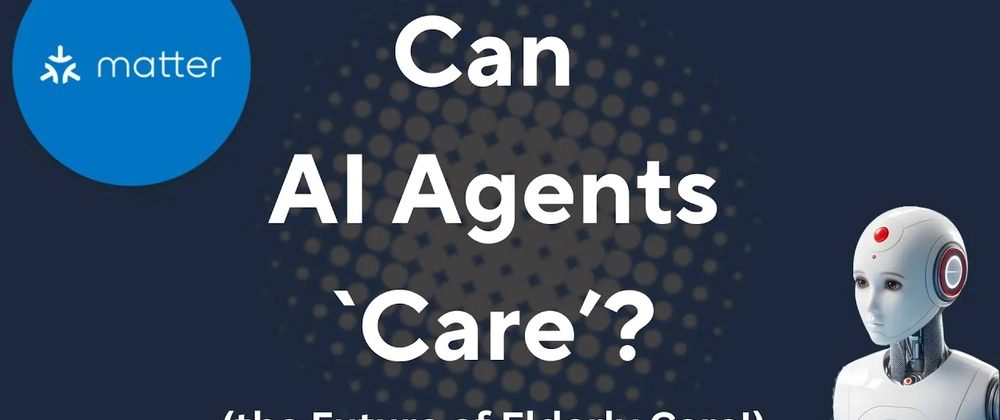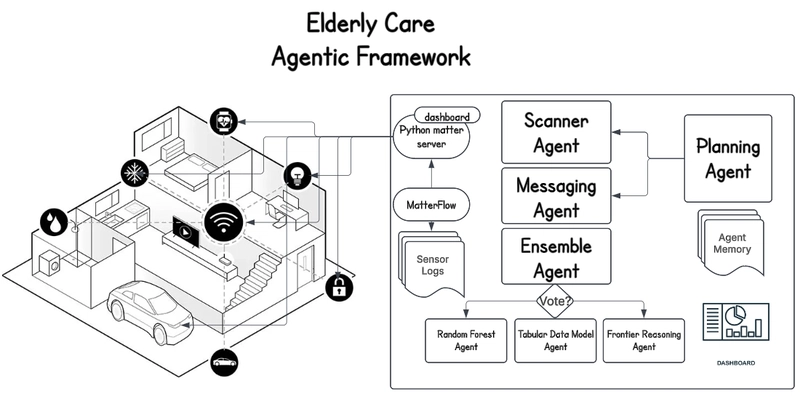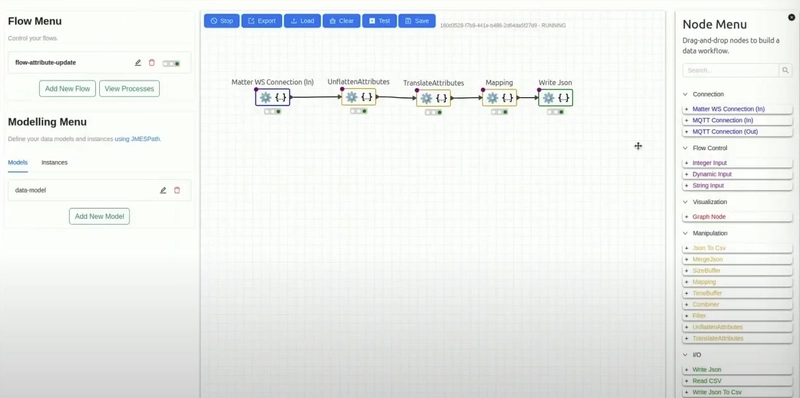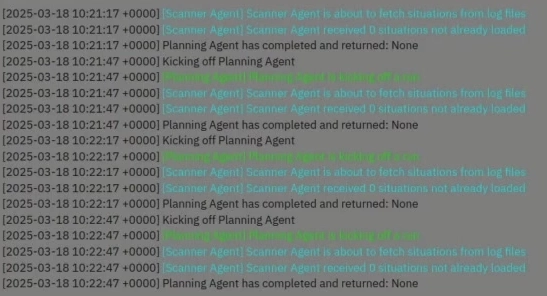Introduction
As developers, we're always looking for meaningful projects that not only challenge our skills but also make a real difference. Imagine creating a system that helps elderly individuals live safely and comfortably in their own homes. That's exactly what I set out to do by integrating AI agents with smart home technology to develop a proactive elderly care monitoring system.
The Idea: Merging AI and Smart Homes for Elderly Care
The concept was straightforward: utilize AI agents to monitor and assist elderly individuals within their homes, leveraging smart home devices to detect anomalies and provide timely interventions. With the rise of the Matter protocol—a unifying standard for smart home devices—the timing was perfect to embark on this project.
System Architecture Overview
Figure 1: System architecture illustrating the interactions between AI agents and Matter-compatible devices.
The system's architecture is built around an agentic framework, consisting of multiple specialized AI agents working collaboratively:
- Planning Agent: Coordinates the workflow and triggers other agents as needed. This is built on OpenAI gpt-4o frontier model.
- Scanning Agent: Monitors sensor logs for any unusual activities or anomalies.
- Messaging Agent: Handles communication, sending alerts or notifications when necessary.
- Ensemble Agent: Aggregates insights from various AI models through a voting mechanism to ensure accurate decision-making.
The Ensemble Agent incorporates three distinct AI models:
- Random Forest Agent: Utilizes traditional machine learning techniques for anomaly detection.
- Tabular Data Model Agent: Combines AI and machine learning to analyze structured data effectively.
- Frontier Reasoning Model: Applies logical reasoning to assess situations and make informed decisions.
Each agent processes sensor data independently, and the Ensemble Agent consolidates their results through a voting system. The final decisions are stored in the agent memory, facilitating continuous learning and improvement.
Integration of Matter-Compatible Devices
A significant aspect of this project was integrating Matter-compatible smart home devices. Matter is an emerging protocol that ensures seamless interoperability between various smart devices, making it easier to create a cohesive and responsive home environment.
By utilizing the Python Matter Server from the Open Home Foundation, the system can interact with a wide range of Matter-supported devices, including:
- Locks: Ensuring doors are securely locked or unlocked as needed.
- Lights: Adjusting lighting based on time of day or detected activity.
- Wi-Fi Networks: Monitoring connectivity to ensure seamless communication.
- Electric Vehicle Chargers: Managing charging schedules and monitoring usage.
- TVs and Sensors: Controlling entertainment systems and monitoring environmental conditions.
This integration allows for real-time monitoring and control, enabling the AI agents to respond promptly to any detected anomalies.
Data Collection and Analysis
To gather and analyze data from these devices, I employed Matter Flow, an open-source tool designed to produce comprehensive sensor logs. These logs serve as the foundation for the AI agents to detect patterns, identify anomalies, and make informed decisions.
Figure 2: Collecting Data from Matter devices using Matterflow.
Data Flow and Learning Process
Figure 3: Flowchart depicting the data collection, analysis, and learning process within the system.
A crucial component of the system is its ability to learn and adapt over time. By incorporating human feedback reinforcement learning, the AI agents can refine their decision-making processes based on real-world interactions and caregiver input. This iterative learning approach ensures that the system becomes more accurate and reliable, ultimately providing better care for elderly individuals.
Dashboard and User Interface
For caregivers and family members to monitor and interact with the system, I developed a comprehensive dashboard. This interface displays real-time data, alerts, and system status, allowing users to stay informed and take action when necessary. The dashboard serves as a bridge between the AI agents and human caregivers, fostering a collaborative approach to elderly care.
Shoutout: LLM Engineering Master AI Course
I want to acknowledge Ed Donner for his exceptional LLM Engineering Master AI course. This program provided me with the knowledge and skills to embark on this project, transforming me from a novice to a confident AI developer in just six weeks. If you're looking to deepen your understanding of AI and large language models, I highly recommend this course.
Conclusion
Developing this AI-powered elderly care system has been a rewarding journey, blending the realms of AI, smart home technology, and compassionate care. By leveraging Matter-compatible devices and an agentic framework, I've created a system that not only enhances the safety and well-being of elderly individuals but also empowers caregivers with valuable tools and insights.
For developers interested in making a tangible impact, exploring the intersection of AI and healthcare presents a wealth of opportunities. Whether you're passionate about improving elderly care or eager to dive into smart home integrations, there's ample room to innovate and contribute.
Need more info?
Check out my youtube video
If you want a more comprehensive tutorial style video, check out my coding tutorial on youtube.
Here is a link to my GitHub repo
If you found this journey inspiring or have insights to share, feel free to connect and collaborate. Together, we can harness technology to create solutions that truly matter.








Top comments (0)